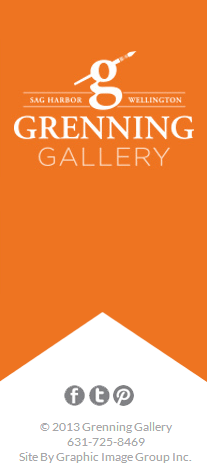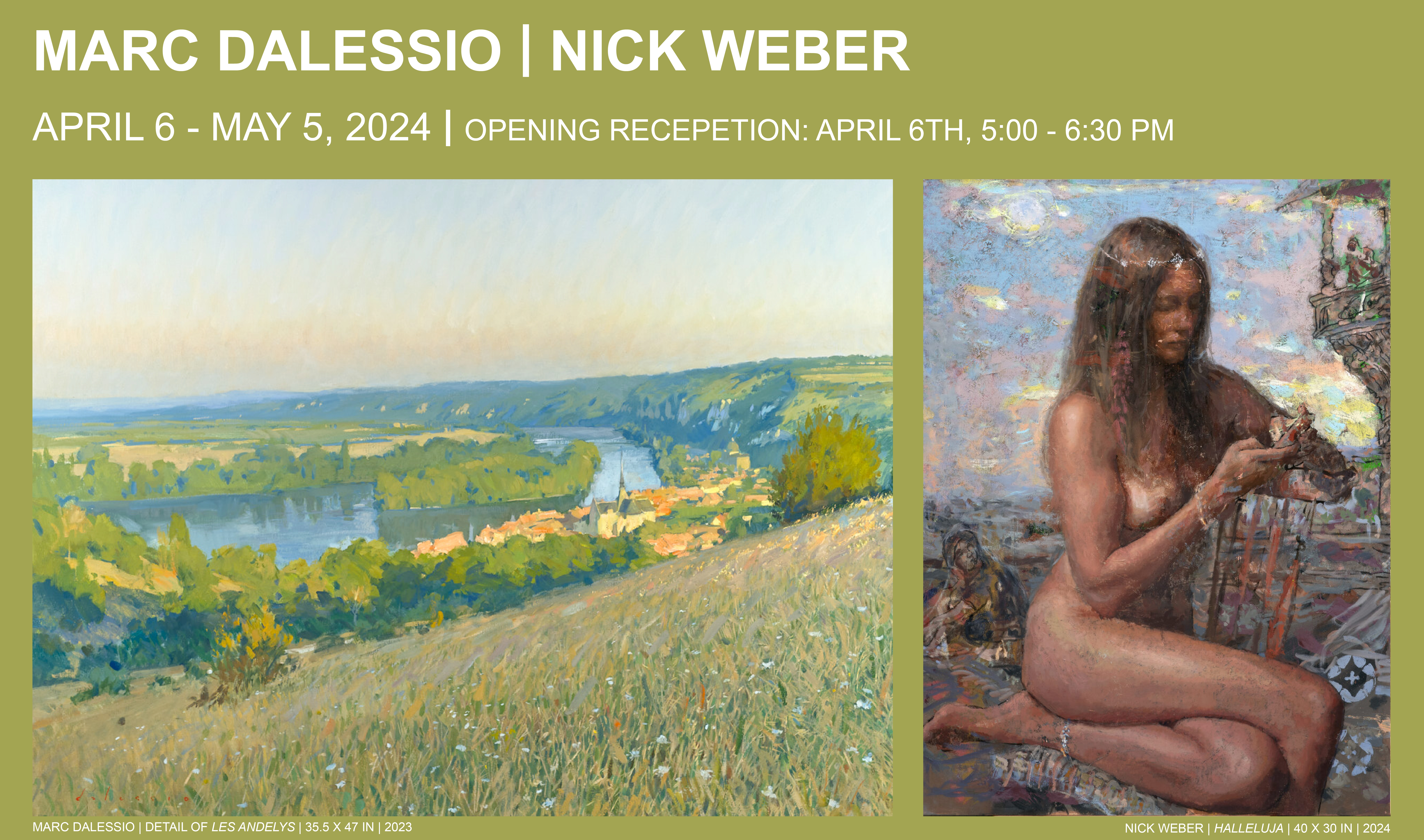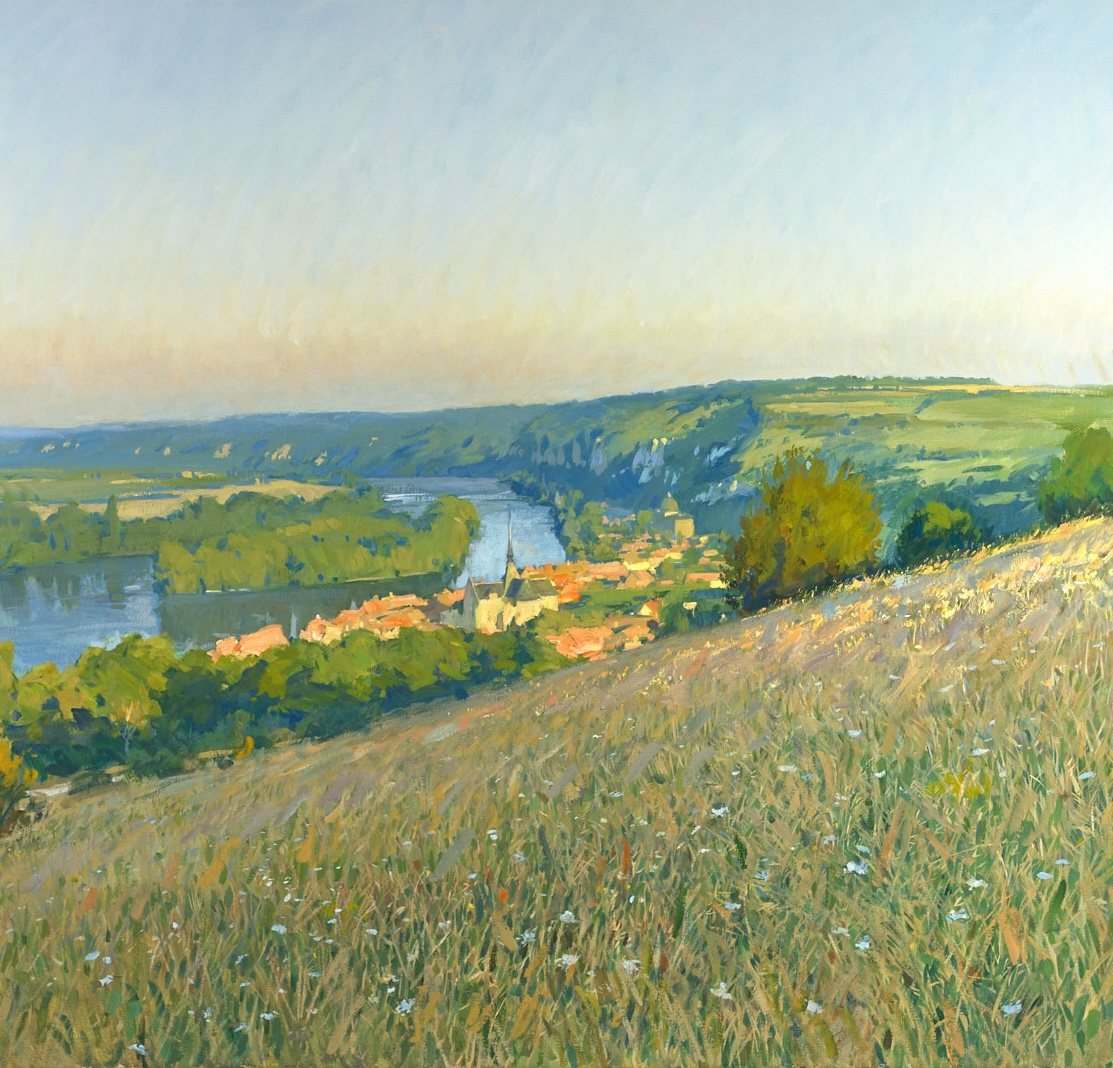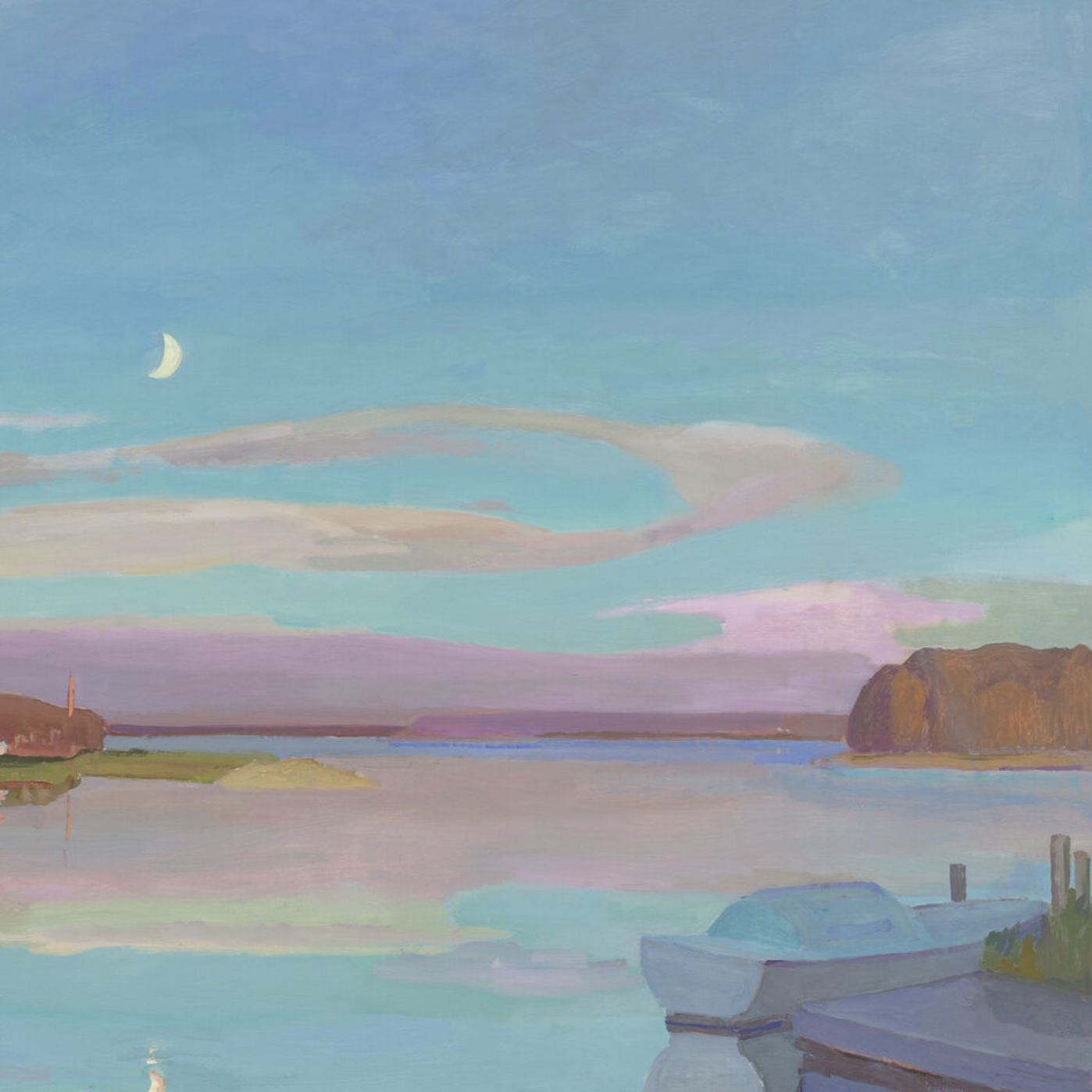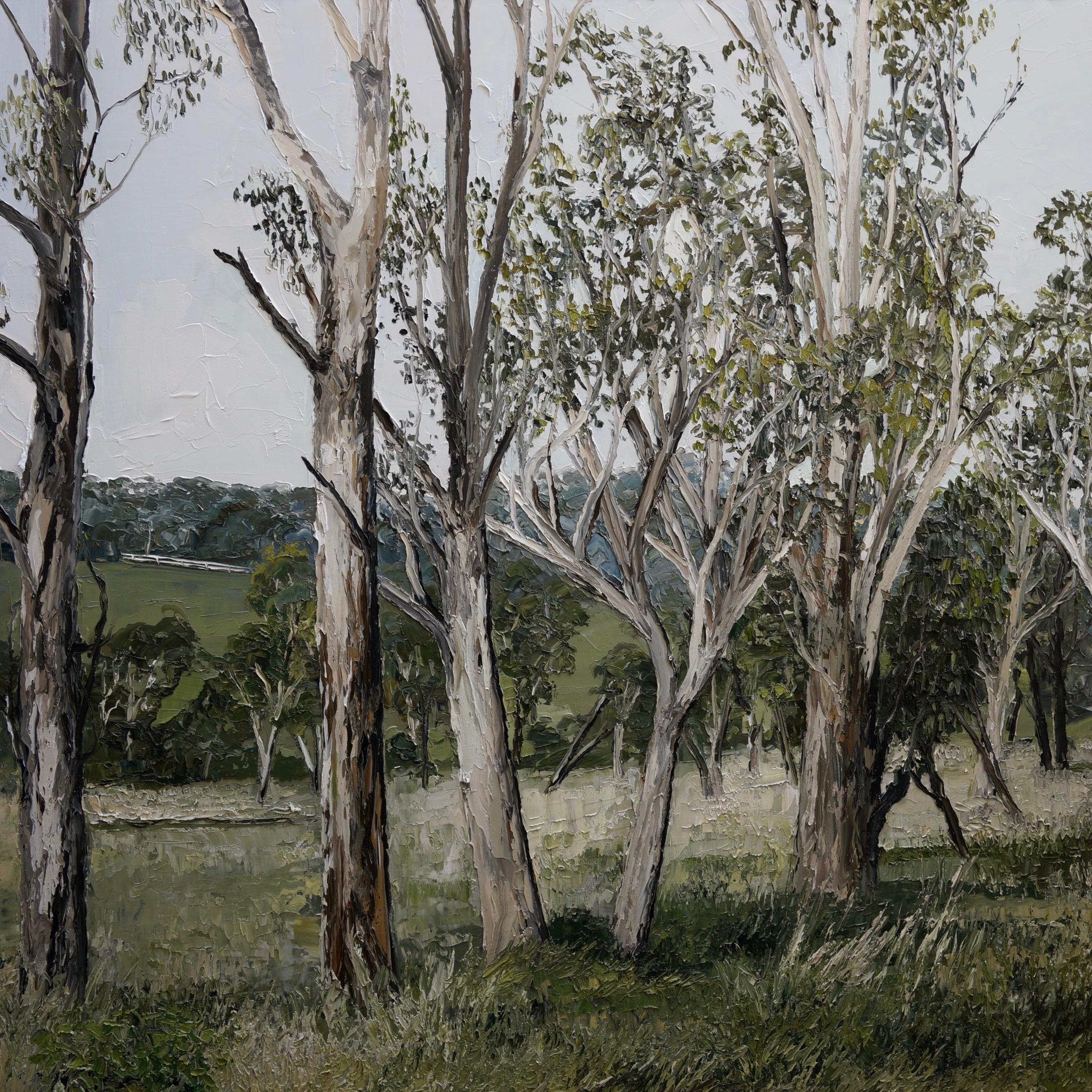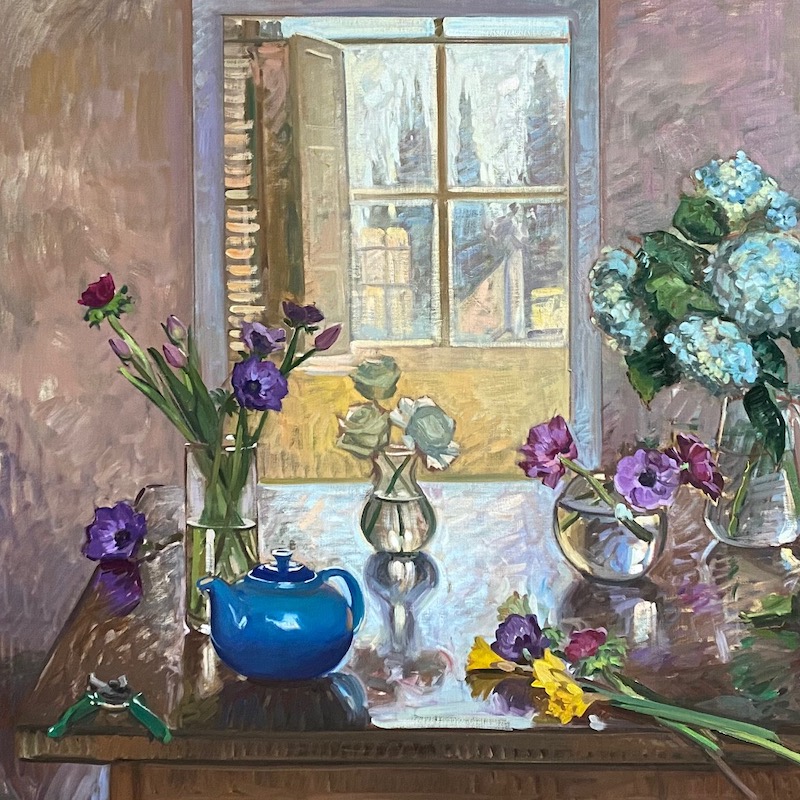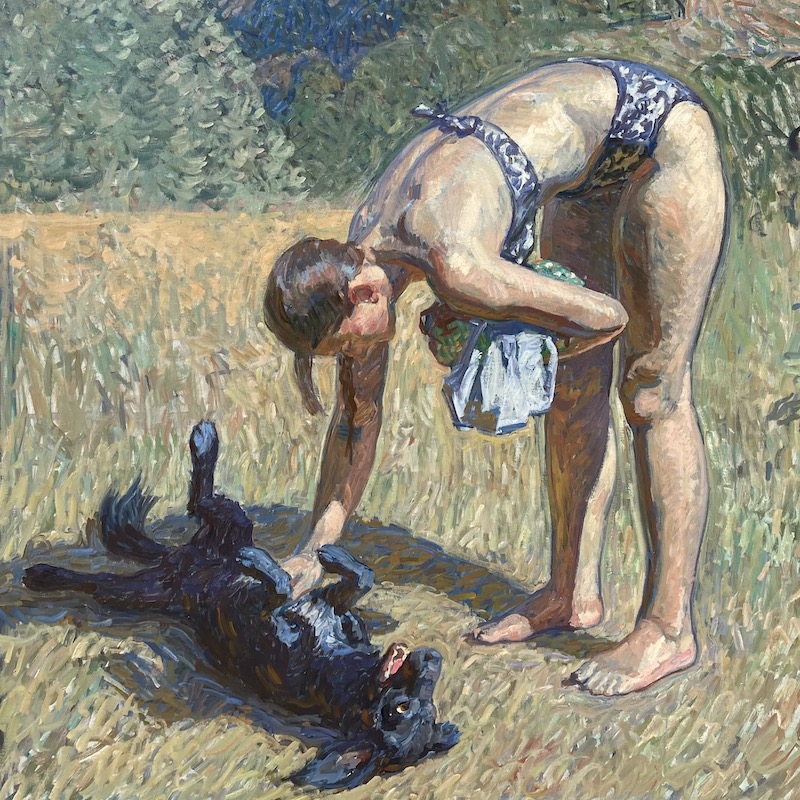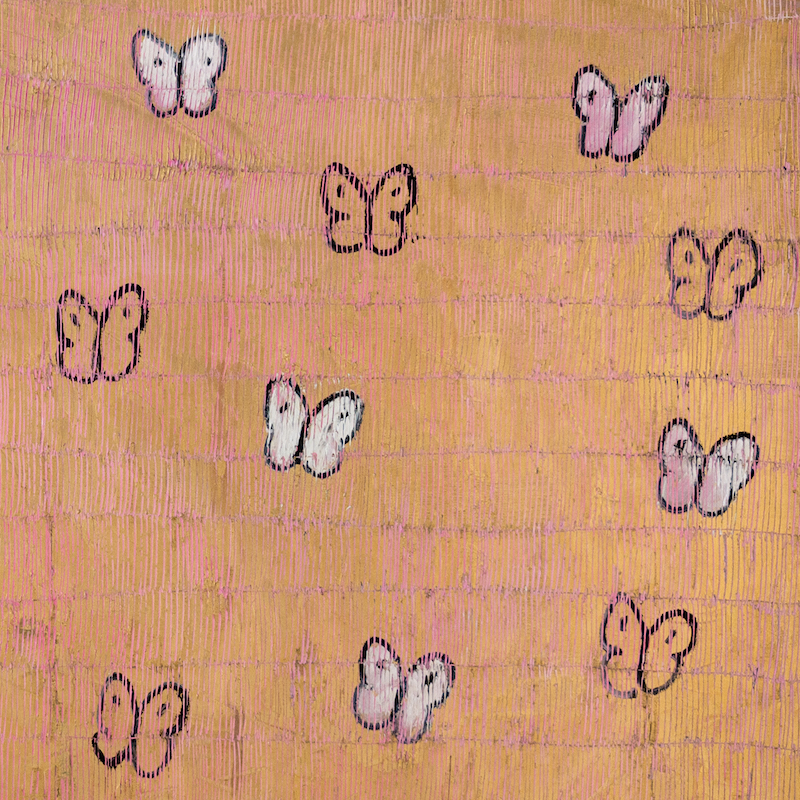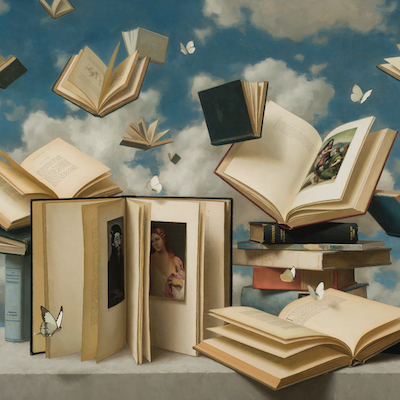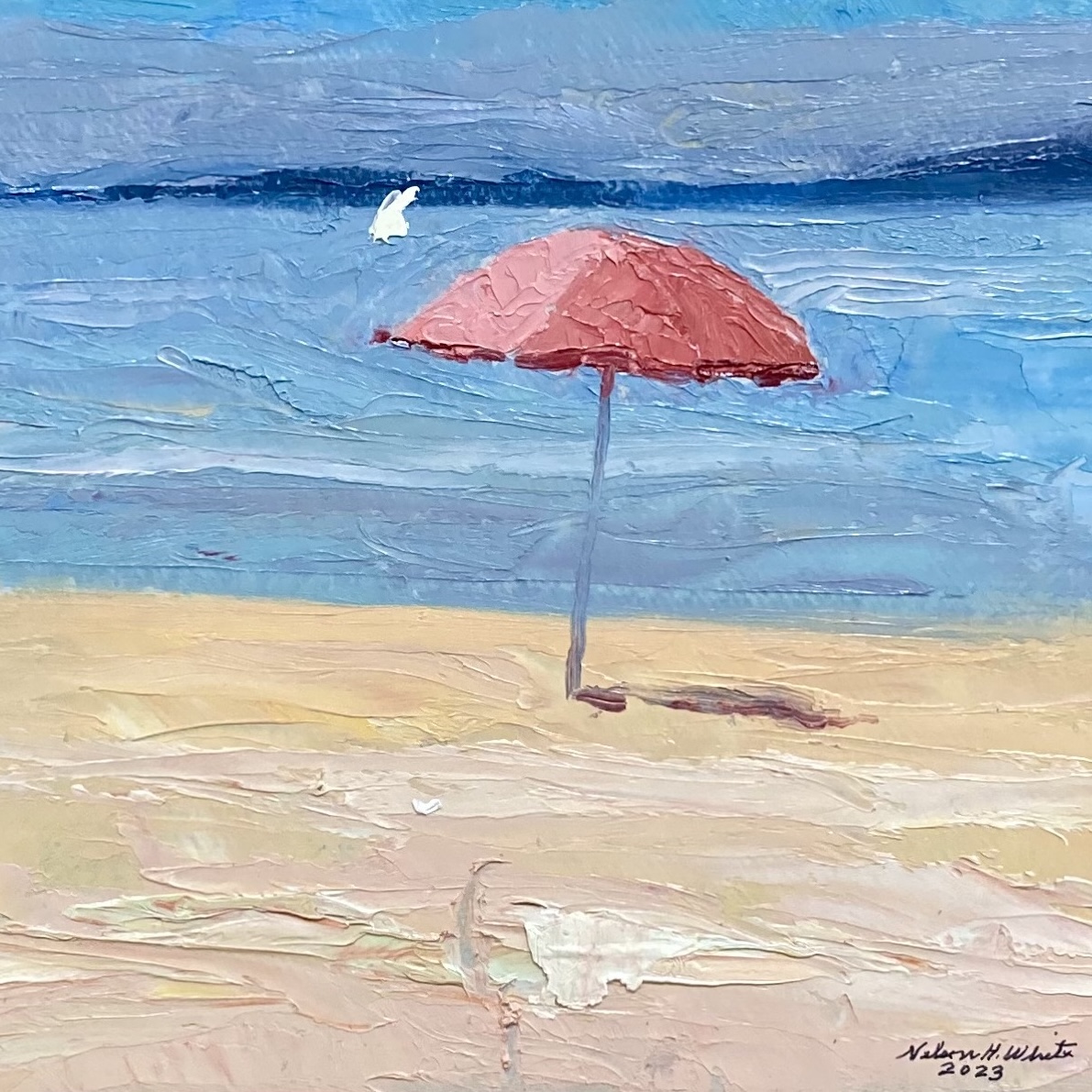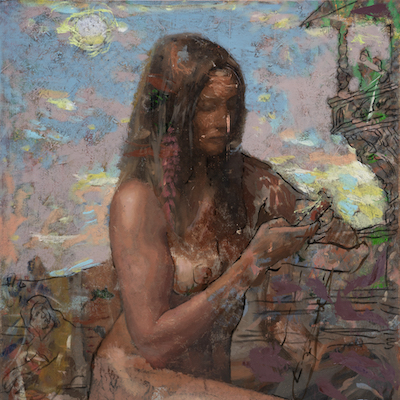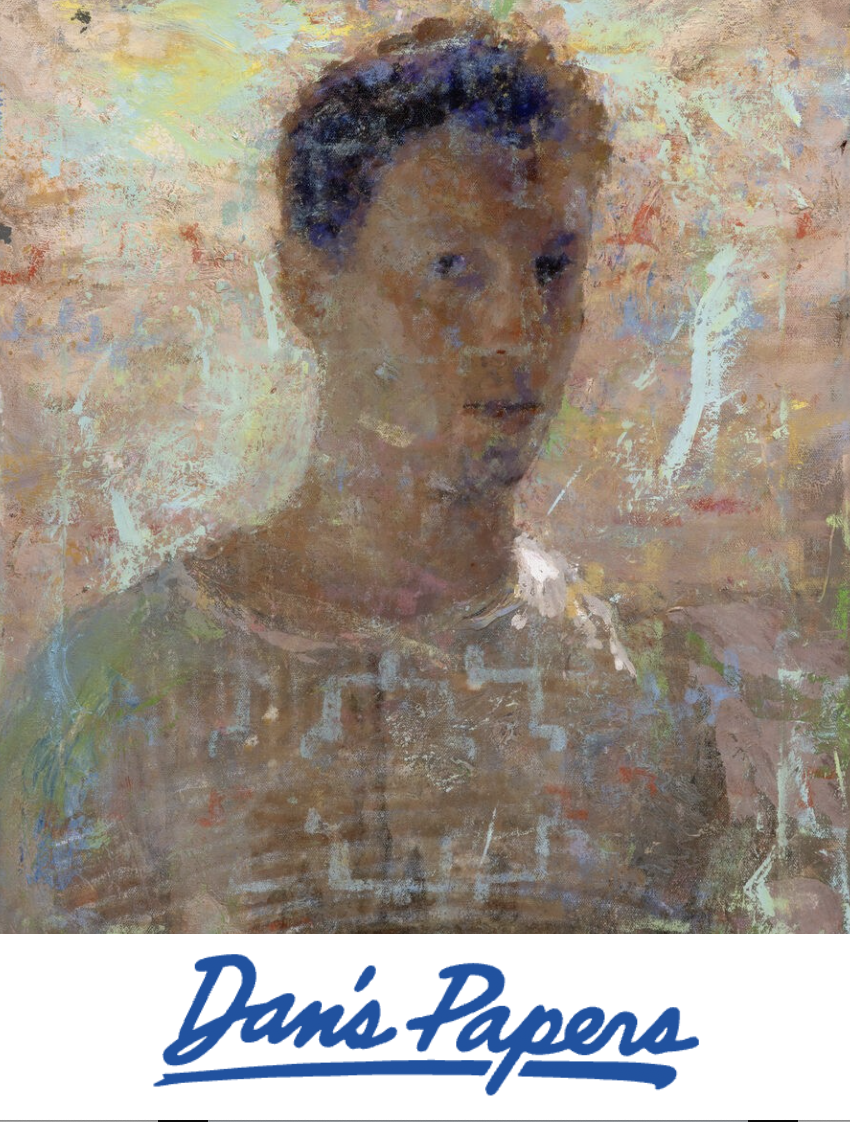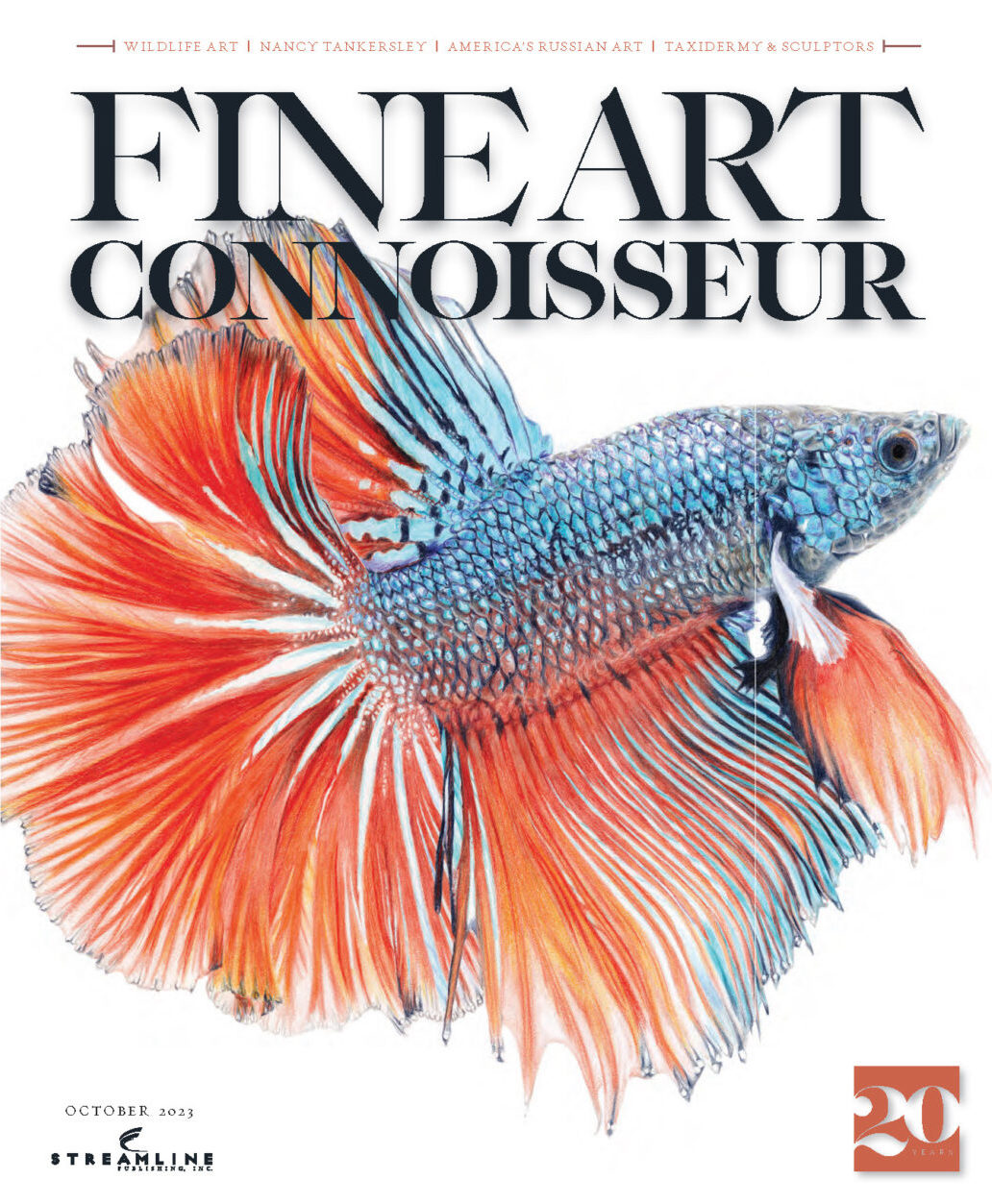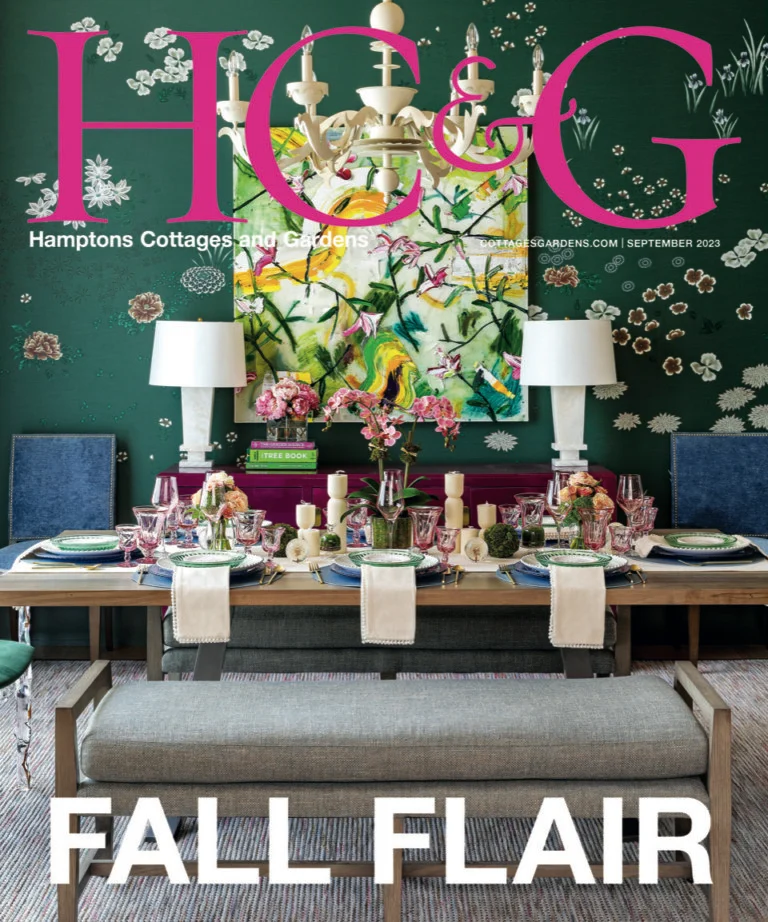FEATURED ARTISTS
FEATURED EXHIBITIONS
Exhibition Calendar
2024
Images: Winter, Spring, Summer, Autumn at Estremoz Castle, by Marc Dalessio, 2023, 4 paintings Available
Greenhouse
January 13th - March 17th 2024
The Grenning Gallery is pleased to unveil our next exhibition, Greenhouse. This exhibit will hang from January 13, through March 17th, 2024.
Please join us for an Opening Reception on Saturday, January 13th from 5pm-6:30pm.
The Grenning Gallery is pleased to unveil our next exhibition, Greenhouse, a group exhibition celebrating extensive varieties of flora, and the invention of a structure that allowed us to advance our botanical knowledges. This exhibit will hang from January 13, through March 17th 2024. Please join us for a verdantly lush Opening Reception on Saturday, January 13th from 5pm-6:30pm. Please also stay tuned for an in-gallery discussion led by exhibiting artists Edwina Lucas and Maryann Lucas, as well as local plant experts, who will share insights on their experiences as florists or gardeners, as well as the important benefits native plants have within regional ecosystems. (Lecture Dates TBA).
It’s no surprise that generations of artists have been captivated by nature’s beautiful blossoms, with their wide assortment of shapes, colors, and heft. A single flower can behold serious symbolism, or inspire sensational compositions, yet where do these flowers originate? Each genus is native to a specific region, climate, and soil type. The range of our environment’s climate is what allows for this perpetually endless class of flowers. But how do we have access to plants and flora which weren’t born in our native regions? That praise is due to man’s invention of the Greenhouse (aka: conservatory, hothouse, glasshouse, solarium, etc.).
The first Greenhouses, or as Roman philosopher Pliny called them, specularia, were erected on the Island of Capri around 30 AD, specifically to provide a year-round supply of melons for the Emperor, Tiberius Caesar. This marked man’s innovation to extend plant life in any climate. However, this novelty lost importance as midieval times were long-plagued by wars and illness. It wasn’t until the beginning of the Renaissance that Italians developed the concept of modern greenhouses.
For centuries, floral still lifes were not considered important works of art. Grand allegorical, or historical narrative paintings were seen as the most prestigious genres to patrons; any incorporation of flowers were used simply to bolster the symbolism of the overall painting. It wasn’t until the 16th century that these distinctions changed; realist painters of the Dutch Golden Age elevated florals to a primary subject; and in the 19th Century Impressionists embraced everyday scenes and subjects as worthy of their gaze. In fact, Claude Monet once said “I am following nature without being able to grasp her, I perhaps owe having become a painter to flowers.”
This exhibition is anchored by the grand “Floral Compositions” from Amy Florence (b. 1989 | London), who has spent the better part of the last three years studying, arranging, and painting flora. Daffodils, peonies, roses, and tulips, are just some of the flowers that can be found in this impressive series of paintings. In “Floral Composition, Summer” Florence invites us into her process, as she places blossoms in assorted vessels; a remainder of yellow roses await their arrangement in their wrappings, as well as pruners resting along the edge of the table. Florence shows us the intense amount of space, time, and care that is needed to maintain a grandiose arrangement of flora like this one.
We get a deeper look into the setting of Florence’s compositions in “Looking towards Bonazza”, where an open window showcases the landscape beyond the still life. The rolling green hills of Tuscany are known for generating beautiful wildflowers, from sunflowers and yellow daisies, to poppies, hyacinths and forget-me-nots. Clementines are also scattered along the tabletop, which are known to grow in the area. Florence portrays a stunning array of native flora and fruits adorning an interior within their homeland.
“Sunflowers”, “Poppies, Chamomile”, and “Spring Wildflowers” are three of the latest florals from Ben Fenske (b. 1978, Minnesota), who lives in Tuscany with Florence. He often wanders the hills near their home, to pick wildflowers for his still life paintings. Fenske invites us into this routine with his moody impressionistic landscape “Wildflowers, Storm”. A variation of greens makes up the majority of the canvas, underlining the vast vegetation of Tuscany. The background is a dark grey-blue sky, with vertically slanting brushstrokes, noting the presence of distant rain. It’s only in the foreground, where Fenske delineates spots of colors amidst the grassy hilltop.
Marc Dalessio (b. 1972, California) is one of the worlds top Plein-Air painters, thus, his modus operandi is to paint things as he sees them, directly on site. This is why we have so many lush landscapes from a variety of regions around the globe. Dalessio has captured it all; wildflowers on the beach in Portugal, grapevines being harvested in Tuscany, a field of yellow lupins in France, and a bush of blue hydrangea in East Hampton. He often paints flowers that are uncut, in the bush they’ve resided in since they were mere buds. “Two Roses” is a fabulous depiction of two buxom blossoms, not neatly arranged in a vessel, but haphazardly existing amidst a jungle of green leaves. He zeroed-in on a rosebush and presents just a small snippet to the viewer. Conversely, Dalessio will focus on beautiful flowers as they adorn buildings or city-sidewalks. For instance, “Bougainvillea in Evora” is a quiet street scene from Portugal. White buildings reflect sunlight and simultaneously cast shadows upon the street; not a single soul is in sight, it’s a peaceful setting. The focal point however, is an eruption of bright fuchsia bougainvillea framing a doorway in the distance. This simple adornment inspired the entire painting, forcing Dalessio to stop and situate his easel.
Nelson Holbrook White (b. 1932, New London, CT) spends half of his year in Italy, so he is known to produce vibrant landscapes of poppy fields. The red poppies, rather than being described by his brush, are hinted at with flicks of his wrist. In the summer months, White returns to the states where he’ll paint at local beaches, which are adorned with bright pink dotted rose bushes. White’s earned confidence is evidenced by his bold use of the palette knife as he lays pure pigment upon pure pigment to share with us his daily communing with nature.
Maryann Lucas (b. 1959, Long Island) lives here in Sag Harbor, and bestows upon the gallery blossoms found within her own garden and local garden centers. Delicate compositions of stoic, buoyant hosta hyacinths, reach upward from their leafy foundations with trumpet shaped blossoms in “Glow Up” and “Ascension Seekers”. In “Magnolia Meditation” Lucas observes the flowers as they begin to flourish on their branches. Magnolias bloom only once a year in the spring or early summer; their splendor is fleeting. The overcast grey-green backdrop connotes that brisk time of year, when the cold is just beginning to break. Pink Magnolias symbolize strength, perseverance, and feminine energy; which when drafted by Maryann Lucas, makes perfect sense.
The apple does not fall far from the tree, as Maryann’s daughter, Edwina Lucas (b. 1991 Long Island) a talented painter in her own right, also finds a muse in flora. Over the years, Edwina has delivered bounties of paintings devoted to the garden in her backyard. Her latest dedications can be seen in “Home Grown Blooms” and “Take a Bow”.
She has also worked en-plein-air in the area, as in “Spirit of the Woods”. Just around the corner from their home, Edwina set her easel up in the preserved woodlands, capturing the natural light as it shines through stalks of trees. A burnt orange ground indicates the presence of fallen leaves, blanketing the earth before winter.
This year, Edwina is re-focusing on flora and fauna against a new thematic backdrop. She juxtaposes her skillfully observed florets in front of notable landscapes painted by the Hudson Valley School. From Thomas Cole to Moran, Lucas keenly draws inspiration from these panoramic masters of the 19th century to correlate with her fresh young blossoms; i.e. Dahlias and a yellow canary, as we see in “Heaven on Earth”.
Harking back to the 16th Century artists from the Dutch Golden Age, contemporary realist painters Steven J. Levin (b. 1964, Minnesota), and Sarah Lamb (b. 1972, Virgina) focus their gaze upon the simple still life. Their finished paintings however, are far from plain; on the contrary, they are opulent celebrations of nature’s striking concoctions. In “Peonies in Glass Vase” Lamb exhibits a grouping of ample blossoms, subtle in coloring, yet round and full of verve. However, their vivacity is not eternal. The proof lies along the wooden tabletop; fallen petals and leaves that didn’t endure their new environment for long. It’s only a matter of time before the rotund blossoms start to wilt, losing volume and vitality. But that inevitable misfortune is a sight the viewer does not have to witness; thanks to Lamb’s perfectly preserved composition in oil paint.
Steven Levin delivers grand portraits of flora, and even vegetables as seen in “Cabbages and Chard”. Some of these still life paintings are subdued, like Lamb’s, as they present the subject alone against a neutral backdrop. Meanwhile, Levin takes his still lifes to another level by adding a landscape as the backdrop, or a pairing of a sentimental item, as can be seen in “Peonies with Locket”. Levin incorporates certain perennials pollinator qualities, by adding fluttering butterflies, which naturally are attracted to flora.
Anthony Ackrill (b.1958, Alaska) takes an allegorical approach to his affinity for nature. From voluptuous portrayals of eve, in a Rousseau-like Garden of Eden to a Botticelli-esque Venus who instead of being birthed from a shell, is an icon of transformation, from tiny tadpole to glorious butterfly. In these paintings, the flora takes a backseat to the figure’s narrative. In “Awakening” our eye is drawn to the buxom beauty reclining with ease on the earths floor, allowing a snake to coil around her wrist. She is the epitome of what it means to be “one with nature”. A magnolia blossom sprouts proudly above her head, growing directly from the branch. A white lily blossoms atop the water’s surface near her feet. A heron drinks from a pool of water. These inclusions are filled with symbolism, bolstering the narrative the figure carries.
Angel Ramiro Sanchez’s (b. 1974, Venezuela) ethereal figuration entitled “Spring (Calabrone)” uses symbolism to highlight the importance of change. We see a woman emerge from a somewhat abstract backdrop -it appears as if she is resting, or seated upon, the horizon. Carefully, she reaches out towards a single bee, an important pollinator within the globes ecosystem. Clearly an homage to man’s fear of change; parallel to natures resilient persistence of change. However, we also see a portrait of one of the most under-respected species on earth, yet a crucial component within the hierarchy of organisms; the honeybee.
Also included are works by Kelly Carmody, Melissa Franklin Sanchez, Tina Orsolic Dalessio, Rachel Personett, Hunt Slonem, Darius Yektai, and introducing, Nick Weber.
Night & Day: Carl Bretzke & Viktor Butko
October 14th - November 12th, 2023
The Grenning Gallery is pleased to announce our new exhibition: Night & Day: Carl Bretzke | Viktor Butko, a two-man exhibition of masterful plein-air & studio paintings from both near and far. Artists who paint from direct observation understand that scenes change depending on the time of day, and their commitment to their craft demands a level of endurance. Time is limited to capture a shadow, or perhaps the scene is more interesting now that that shadow has moved…Night & Day is an ode to the many colors of light, and how these colors change throughout the 24-hour cycle. This exhibit will be on view through Sunday November 12th, 2023. Please join us for an Opening Reception on Saturday, October 14th from 5:30-7:00 pm.
Carl Bretzke (b. 1954 - Minneapolis, MN) returns for his 9th consecutive year exhibiting as a Grenning Gallery artist. Born, and currently based in Minnesota, Bretzke is an emotionally accurate and observant chronicler of urban and rural plein-air scenes. He is most comfortable painting the Midwest scenes he intimately knows, and his eye for American life is recognizable to any viewer. Having been a surgeon for 30 years before becoming a full-time painter, Bretzke reflects: “In medicine, you see what you know. In painting, you paint what you see. You must know it, to see it, to paint it.” His work explores the prismatic palette, and he is constantly concerned with the effect of light (perhaps an upshot of his scientific background.) Bretzke’s paintings perform tricks for the eye as he explores the subtle shifts of the different colors of light within the composition.
He is particularly adept at scenes which ooze in darkness, reminiscent of Edward Hopper. Bretzke remarks: “What most people don’t notice is, as the light drops off, the color of light changes. You must see WHERE the color changes and where the light is coming from.” In Division Street at Night Bretzke illustrates several light sources. The brightest being a pair of oncoming headlights – two glaring white orbs which cast luminous beams up to the dark sky and reflect against the road. This stream of white light allows the viewer to see the rich blue within the blackened night sky. Streetlamps adorn the perimeter of the road which radiate spheres in a burnt yellow-orange hue. An ornamented flowerpot adorns a triangular isle of grass, backlit by another pair of headlights, and a bright storefront window.
Bretzke’s work also exudes a cinematic quality that evokes a more positive and connected iteration of Edward Hopper’s deep dive into the American experience. In Waiting for the Check Bretzke places us at the historic Sag Harbor fixture, The American Hotel. A thriving establishment since 1846, this local institution holds a place in every heart that has visited our small village. One may feel complete contentment, having a late dinner on the porch, with heat lamps radiating warmth through the colder months, observing any and all Main Street movements from their treasurable seats. A waiter stands in the doorway, eager to assist with any needs, gazing directly at the viewer – a reassurance that he is prepared to serve.
Bretzke moreover delivers a series of seascapes, with colorful clouded skies, and urban scenes with recognizable contemporary automobiles parked along nostalgic neighborhood streets. His winter landscapes sing with the silence of snowflakes; the only sound being footfalls atop fresh powder.
Viktor Butko, (b.1978, Moscow) was our great find when we invited 8 Russian painters to Sag Harbor in 2016 to paint with the Grenning-Gallery-formed Russian American Painting Alliance. Not only were Butko’s eyes fresh to our landscape; his attention to light and shadow was searingly satisfying. Butko’s use of soft pastel colors unifying in the sky juxtaposed with thick, heavy outlines of the backlit trees are all at once transfixing and yet, comforting. Since his first visit, Butko has planted himself on Shelter Island for 6 months out of every year, painting the local landscape, making friends with locals, and even being invited onto a few properties to capture and preserve their prevailing brilliance.
Butko also painted the fork of Division St and Hampton Road, during his first visit to the village in 2016 In Village View. Unlike Bretzke, Butko painted this scene during daylight. The painting’s intrigue is less about the colors radiating from light sources, but instead the subtle shifts of hues found within natural light. Dappled light amidst a shadowed lawn draws our eyes to lighter shades of green. The steeple at St. Andrews Church bisects the blue sky with a strong white—naturally radiating the structure’s prominence along the village skyline.
Butko is not limited to daylight; he also paints after-dark. However, he is still most concerned with natural light sources. In April’s Moon, Shelter Island Butko shows us a pond surrounded by tall, bare trees, underneath a glowing full moon. The bright creamy orb lightens the entire sky, and shimmers delicately onto the pond’s surface.
In this exhibtion, Butko paints the same location at only slightly different times of day - resulting in two very dissimilar works. In "Sunset Over the Islands" Butko shows a seascape from a hilltop adorned with evergreen trees. The sky high-above is a creamy gold, with streaks of purple clouds. The sky evolves to a pinker hue as it falls to the horizon. The surface of the sea appears a silver, lilac color, reflecting the subtle hues in the sky above. In "Fiery Sunset" Butko presents a sky with bold, saturated colors - still true to life! This is peak sunset, where the sky is canary yellow, the clouds are glowing a fiery pink and backlit with a deep lilac hue. The sea below reflects these colors loudly. Just a few minutes separate the point of view in each composition, yet the paintings are drastically different. A prime example of the importance of timing for a plein air painter.
While Bretzke is fascinated by man-made light-sources combatting the darkness of night, Butko paints the natural, sprawling light of early, mid, and late day. Together, both artists remind us of how light shapes our world in the course of 24 hours.
Hello, my name is: Anthony Mastromatteo
September 16th - October 9th, 2023
The Grenning Gallery is pleased to announce our latest exhibition: Hello My Name Is: Anthony Mastromatteo, a solo exhibition reintroducing the contemporary realist painter to our clients after 18 years. Bemusing and brilliant, he is a classically trained painter creating philosophic compositions. Irony is never lost on this artist, who cleverly declares that “Trompe L’Oeil was the first Modernist movement” and proves his claim via his own hyper-realist oil paintings which force the viewer to dive deep into their psyche; discerning reality from artifice in various subjects both foreboding and sometimes hilarious. This exhibition will be on view through Monday, October 9th, 2023. Please join us for an Opening Reception on Saturday, September 16th from 5:30-7:30 pm.
Anthony Mastromatteo (b.1970 | Talmadge, Ohio) grew up in the American Midwest, where big-box stores took root in towns surrounded by miles of cornfields. A simple, sometimes lackluster lifestyle propelled him to leave the quietness, enroll in Princeton as an undergrad. After graduating with his Bachelor’s Degree in Art History, he moved to New York City, where he landed a job with Christies Auction House. His experience in the Art World grew in synchronicity with his interest in Art Making. After enrolling part-time at the Art Students League, he discovered one of the first classical ateliers in NYC The Water Street Atelier, headed by Jacob Collins, (which is now known as, Grand Central Academy). We met Mastromatteo here in the early 2000s, as he was one of the early students sopping up this hard-to-come-by training. While devoted to realist painting techniques, his works stands out among what is now a sea of fine painters. Mastromatteo’s knowledge of art history and philosophy informs his cleverly contextual compositions. At first glance, one might label him as a Pop-artist, yet his work has highly intellectual undertones that elevate his style to new peaks.
In preparing for his first major exhibition at the Grenning Gallery, Mastromatteo was inspired to introduce, or, re-introduce himself after years of only painting for his most dedicated patrons. Hello My Name Is features a scattering of the typical nametags we all know, with big red borders and simple, matter-of-fact text in white, and a blank white space for one to write their name. A black sharpie is situated amongst these tags, anxiously waiting to be picked up, capped-off, and penned down. This composition is not only a grouping of familiar objects that are expertly painted; It is also an ode to the struggle of an artist, as he gets ready to make a new painting. How will he fill that white space, or canvas, and what will it mean for his identity? This anticipatory anxiety is elaborated with droplets of condensation atop the marker – it’s sweating – literally. Furthermore, the placement of the black sharpie is deliberate, referencing traditions of a famous Supremetist in art history, who importantly shaped the attitudes of Mastromatteo’s work.
In 1994, Mastromatteo saw the retrospective for early 20th Century painter Kasimir Malevich at the Guggenheim Museum. Suprematism valued non-representational art to the extent that paintings were void of all imagery.
Mastromatteo was struck with the collection of Malevich paintings, claiming “They really made sense to me. There’s a cleanliness to them.” The black square was the most impressive, and he learned that in 1915, Malevich had first exhibited it installed above the door, on the left…which reflects the Russian tradition of placing a religious icon over the door. Mastromatteo mused: “There is something spiritual about the black square…it represents profundity via a high amount of simplicity. It projects the feeling of reverence. When you look at it, you can hear a stillness, and that is when it’s right.” This profound feeling Mastromatteo felt while observing Malevich’s black square stuck with him and informs the majority of his work. A realist painter inspired by a movement of non-representational painting, is an oxymoron – and a highly contemporary concept.
“Is it intellectual bullshit? Or does it spark a feeling in you?” asks Matromatteo. His answer is found in the last 20 years of painting… “YES, it moves me deeply."
In Being and Nothingness Mastromatteo pays homage to Malevich’s black square, and even positions it at the top left quarter of the canvas. The modernist symbol is austere, and formidable, yet it lays flat on the two-dimensional plane. Outside the square, amidst a wall of white, are little butterflies. Their angled wings cast shadows on the wall, elevating the fluttering creatures to the third dimension. A playful blending of the severe, and the beautiful – results in a tongue-in-cheek composition paralleling the flat modernist icon with a hyper-realist representation of a fleeting aesthetic entity from nature.
Continuing his affinity for Malevich’s geometric paragon is Felix Culpa or ‘Must be a Woe,” this time, in red. Three red squares hover above Christ suffering on the cross—one of the most recognizable images in art history—yet here, no wooden cross is in sight. Christ simply floats against a white wall. The three “Red Squares” map the edges of the invisible crucifix, and an old violin, a vessel for creative expression, reaches upside-down, forming the end of the (invisible) holy wooden structure. Mastromattteo provides the schematic for the symbol he knows we will form in our mind. The canvas is bisected in two, where a jigsaw-puzzle seems to have taken shape—Mastromatteo’s way of showing us that the violin exists on another spatial plane from the top of the canvas. However, there doesn’t seem to be room for the violin underneath this puzzle—poking a little fun at the flatness of Modernism. The color red finds its way from the Suprematist squares to the edge of the puzzle intercepted by the violin. The red puzzle piece turns into dripping blood. We look back to the red squares and see the three bloody stigmata instead of an ode to Modernism.
This composition has less to do with religion than it does with the aesthetic struggle of a creative. The “religious verbiage”—as Mastromatteo puts it—is one way of explaining this struggle. The title must not be forgotten when meditating on this painting: Felix Culpa, or ‘Must be a Woe.’ The first part is the latin for “happy fault.” The second, the title of an Emily Dickinson poem:
Must be a Woe— A loss or so— To bend the eye Best Beauty's way— But—once aslant It notes Delight As difficult As Stalactite A Common Bliss Were had for less— The price—is Even as the Grace— Our lord—thought no Extravagance To pay—a Cross-
Both the “happy fault,” and the “Woe,” force us to look at something so familiar with different eyes. This is the artist’s job, and job well done—to help us see anew something we all think we know.
Although deeply imprinted by Malevich, Mastromatteo also finds inspiration from other mavericks in art history, as well as pop-culture. In Ideal he compares Piet Mondrian’s infamous grid painting of 1942, “Composition with Red, Yellow, and Blue” with comic book scrap image of Superman, who is also circa 1942. Each muse is not ornately placed on a pedestal or chiseled to perfection. On the contrary, the Mondrian appears to be printed on a postcard, and Superman was torn from an old comic book; its paper yellowed with age. The two papers are taped up to a grey non-descript wall, divided by a thick piece of white tape, giving each a proper, symmetrical space - like the slides in Art History classes—a comparative study. It’s clear why Mondrian would appeal to Mastromatteo, as his affinity for clean lines sing music to his precision-flocking ears. Superman, on the other hand? Well, first, he is from Cleveland, an Ohio city not far from the artist’s hometown. Furthermore, he is a hero who doubles as an ordinary man, Clark Kent. The immeasurable excitement one can find from the possibility of living near, or working beside a superhero in what seems like “no-where’s-ville” USA, will endure from childhood long into late adulthood.
There are eerie similarities though that brought Mastromatteo to place these icons side-by-side. The primary colors and simplified vision of the “Ideal” that has been mass-produced (one on a post-card, the other through comic books) unite the “serious” art with the entertainment figure.
Another familiar Superhero is found in Wonder, or the Plane of the Invisible. Wonder Woman is another mid-20th Century American Icon, with a perplexing means of transportation. Her “Invisible Plane” was always of course, invisible, and the silly way she sit’s in an imaginary seat flying through the air would force the artist to wonder, “how do you represent an invisible plane”. Here, we see a bright blue canvas, sprinkled with glittery paillettes; an outline of an airplane beneath an outline of the word “SKY”, an infantile depiction of the sun made of masking tape, and finally, the hero, Wonder Woman, her comic clipping taped onto the invisible plane. A very believable, naturalist blue sky with puffy white clouds is visible through the letters and the invisible airplane. It feels like we can reach into the invisible plane to find the natural world…yet atop the plane is an old cartoon of the first female superhero. She overlaps the realistic atmosphere, and even casts a shadow onto it. The planet’s orbit is dedicated to the sun, and all living things need the light to survive…yet this most important element is made up of a crude array of tape strips, asymmetrical, and even torn in-half. This sun refers back to Pablo Picasso’s sun in his painting “Don Quixote”. And finally, the rich blue backdrop that makes up 90% of the painting, is coated in glitter – a medium which children adore, and artists are ashamed to use. It creates a sense of kitsch – because what realist painter would dare to utilize glitter? Yet, this painting is a meditation on the concept of Wonder. Although the image is perplexing and forces one to search for meaning, ultimately the viewer will feel the phenomenon. Aristotle said that “Wonder is the start of all Philosophy”. Upon reflection we find the word SKY leaves a sense of wonder on our tongue. And even when you turn the lights off, and the image goes away, this canvas will still glisten.
In Non-Virtruvian Man we see a faded cardstock cutout of Batman set within a circle, inside a box, made up of white tape, of course. The hero is frozen in motion, his cape’s wings fly upward, extending his form outside of his taped boundary. The title of this painting informs us of Mastromatteo’s inspiration: Leonardo Da Vinci’s Vitruvian Man (c.1490). The notable study of DaVinci’s makes claims on human proportions, however it is a lie that humans are made of divine proportions. We are not perfect, in our natural most primitive forms, as DaVinci depicted. Nor is Batman exactly who we claim him to be—a miraculous superhero skilled with supernatural capabilities. The truth is that he is a wealthy man, an ordinary human, who uses technology to allow him to be a super-human.
One of the most confounding paintings in this exhibition is “The Painting, As Seen by the Wall”. Mastromatteo depicts a bare canvas, framed in reverse, turned-around. He presents the back of the painting to the audience, meticulously portraying the wooden stretcher bars, and neatly affixed staples, which hold the canvas taut in place. The overall image pique’s the logical side of our brain, forcing us to investigate what might be on the other side, but the painting has no front. Conversely, it has two backs! The artistically rendered image doesn’t exist, or perhaps it resides somewhere in the center, inaccessible to the viewer. But in actuality, this painting is about nothing. Similar to Seinfeld, the overall generalization of the content forces us to consider the objective from a variety of perspectives. Mastromatteo’s composition is abstract in context, where a big ornate frame should be surrounding a majestic portrait expertly crafted. It’s a very old-fashioned style, affixed to a contemporary glorification.
Interestingly, Mastromatteo is also acknowledging the 20th century master Claudio Bravo, with this painting. Bravo made auction history in the late 20th century when a small painting of a wrapped canvas went to the MOMA for over $1m. Later in 2011 Bravo created a triptych of the backs of three canvases.
Lovely Mary Jane is a candy wrapper, taped to a blue wall. It’s trash, glorified. But this is not a political statement about commercialism or recycling. This painting was inspired by one of the top 10 banned books across the country, Toni Morrison’s “The Bluest Eye” which is about a young black girl who wishes she had blue eyes, an envy shaped from her love of her favorite candy, Mary Jane. It’s a heartbreaking notion caused by an ideal of beauty perpetuated by a marketing campaign for a sweet treat. Classical painting also hails a certain ideal of beauty… and one wouldn’t usually find something as insignificant as a candy wrapper as the focal point of their pièce de résistance. However, Mastromatteo is asking us to see that here is power in idealization, especially in something so seemingly throwaway. He’s prodding us to be more aware…to make people aware of the significance of the seemingly insignificant. The one power an artist possesses is that of forcing the viewer to look at something of his choosing…and in this case he’s asking us to look at something that may be garbage. Consider Maurizio Cattelan, whom in 2019 taped a banana to the wall with duct tape, and it later sold for $120,000…art forces the viewer to consider something that everyone is telling you to look at. Mastromatteo’s candy wrapper is taped up to the wall in a similar fashion as Cattelan’s banana…if we look long enough at the tape, we’ll notice it’s resemblance to the “not-equal” sign…bringing our thoughts back to Morrison’s distressed little girl. Another fun point to mention, Morrison also hails from Ohio’s Cleveland.
Toni Morrison continues to act as muse for Mastromatteo in “White Picket Fence (Aspirational Memoir)”. The focal point is a bright green square, encased with a picket- fence made of white tape. Inside the square is an old page torn from a “Dick and Jane” reader. These books were prominent in public schools from the 1940’s through the 1960’s, shaping the minds of America’s youth for decades. The page shows a family, together tending to their garden. The text reads: “This is the family you are, that is as happy as can be, that lives in the house that father made.” Here he unveils the seeds of what became 20th Century American Dream. Meanwhile, outside the fence, is an ominous black void, and represents the rest of Morrison’s story, which centers on a black family in Lorain, Ohio not far from his own hometown. Mastromatteo realized that his life WAS like this idealized family in the clipping – happily living within his own white picket fence, unfamiliar with the struggles and suffering that occurs outside the fence. Here, he is asking What are the consequences of this mass marketed image of the American Dream? Does one care for neighbors who don’t resemble them visually? How is it possible that something as innocent as a “learn to read” book could engender racism? Would one rather live in ignorance to these disparities, inside the fence with their perfectly mown green lawn? Or should one cross the fence and venture into the black unknown area where they may be confronted with the reality of deeply discriminated against neighbors. What’s worse?
The ideas behind Regarding Prometheus, or I Will Not Play with Matches are about rules, following rules, and transgression. The top-most item placed closest to the viewer’s plane, is the triangle ruler – which measures limits, and within it appears a yellow legal pad – the metaphorical ruler of law. Beneath the ruler is a number two pencil and a three-hole-punched piece of lined paper annotated with one repeated inscription: “I will not play with matches”. This resonates with any young juvenile who was caught breaking the rules in the in the 196os and 1970s. Further down the page, a Suprematist’s square re-appears, not in the famous red, or black, but instead - it’s been burned away – the outline creating a scorched window frame to the scene below. Within the burned hole, a single Joker card from a 52-deck pokes his head into frame. Adorned in red and black, as most classic playing cards are…but also perhaps a nod to the lost square. The Joker represents the figure in history who CAN transgress, and also his purpose is to be the one to tell the king the truth. He is ancillary in the deck of cards, as his truth is optional to authority. However, any average person learns by breaking the rules, either they learn how to get away with it, or they learn what not to do again. This painting invites the viewer to play with fire and receive the punishment from the gods.
Furthermore, in Greek Mythology Prometheus, who’s Ancient Greek name can be translated to mean “Forethought”, is sometimes referred to as the God of Fire. This stems from his story, of defying the Olympian gods by stealing fire from them and giving it to humanity. He is punished by Zeus for his transgression, with an excruciating daily cycle of torment. Nevertheless, Prometheus became a figure representing human progression, furthering society’s quest for scientific knowledge. His risks resulted in great benefits for mankind.
Mastromatteo’s collection of paintings express his never-ending fixation with reality. His paintings are so realistic that at first glance one is forced to question their eyes. Another, deeper look, sways one to consider other viewpoints; some current, others ancient. What are the norms that society has blindly accepted, and how long has humanity lived happily in ignorance? If a painting depicts a Northern White Rhino, one will assume that the Rhino in the image is attributed correctly, right? Is the anatomy of the creature, correct? Why would one question it? Does a comic book provide entertainment to the average American teenager? Or does it leave a multitude of American’s out entirely? Mastromatteo’s paintings are mysteries to be deciphered. He gives us clues as to what he was thinking while creating these paintings, but of course, there’s always room for external analyses.
RECENT PRESS
Dans Papers | April 2024
Nick Weber Bridges the Abstract & the Real at Grenning Gallery in Sag Harbor
A master of figurative painting and realism, Springs artist Nick Weberis exploring something quite different with his new exhibition at Grenning Galleryin Sag Harbor (26 Main Street). The show — which shares space with a wonderful selection of paintings by Marc Dalessio and is on view through May 5 — presents a remarkable body of work using a technique of Weber’s own invention. Written by Oliver Peterson.
Fine Art Connoisseuer | September 2023
Five to Watch
There is a contingent of contemporary landscape painters whose works could easily be mistaken for those of 19th-century Russia's renowned "Itinerants," but Viktor Butko (b. 1978)'s educational lineage can literally be traced back to one of that movement's leaders, Isaac Levitan.
HC&G | September 2023
Hampton Designer Showhouse
Darius Yektai's "Falling Stargazers" painting graces the cover of HC&G's Fall 2023 issue.
